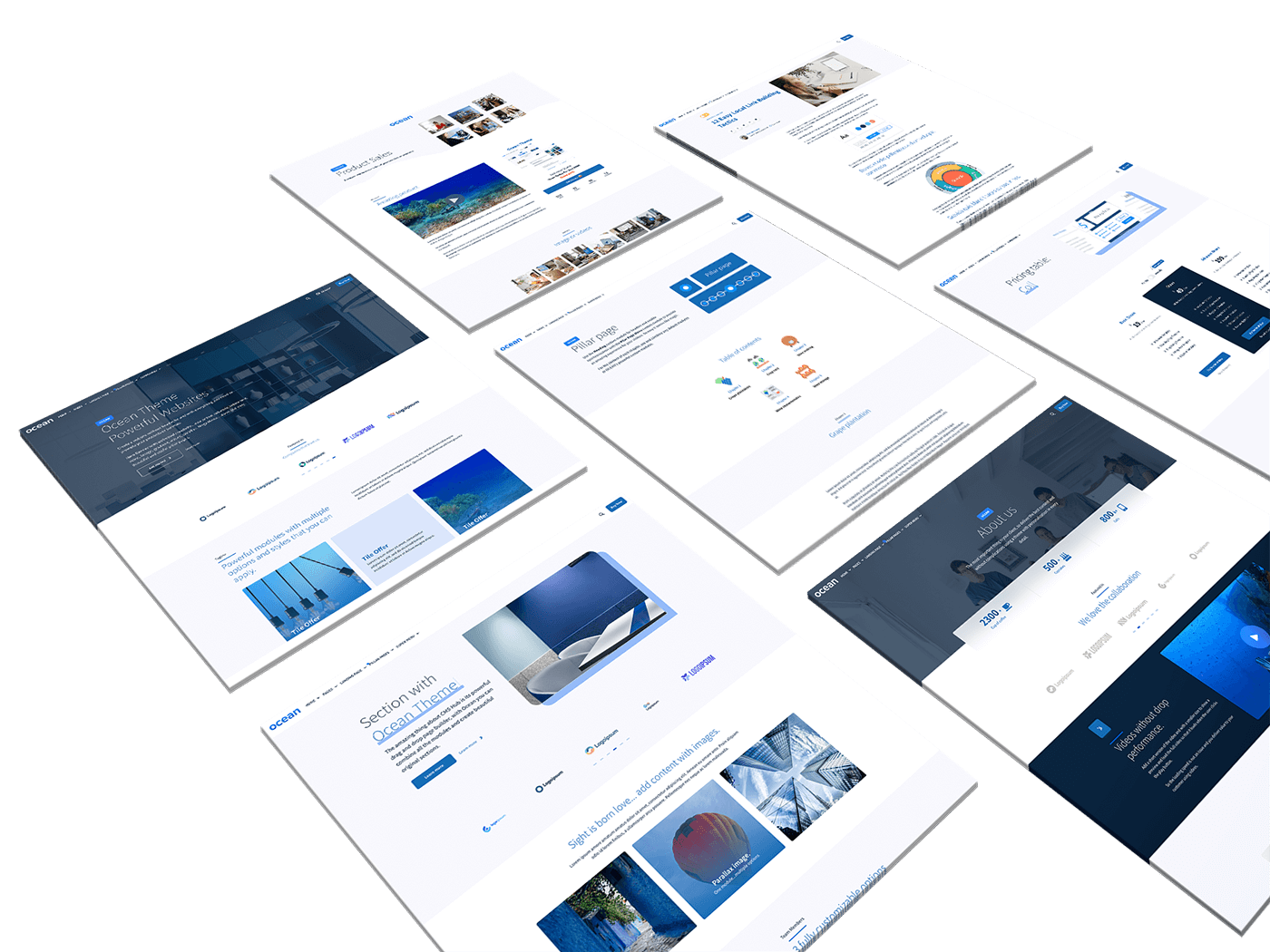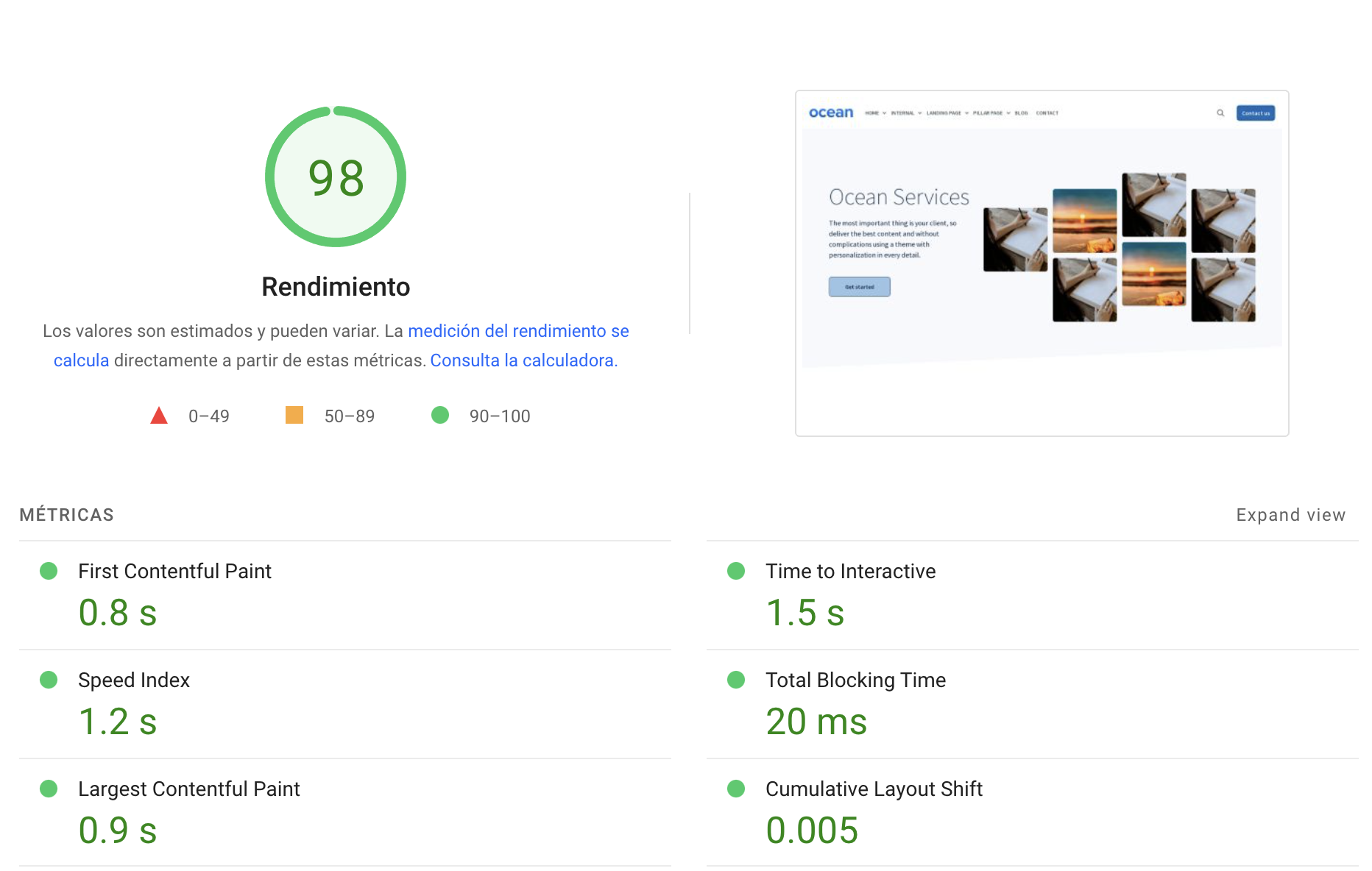Accordion module Ocean Pro Theme
The Accordion module from the Ocean Pro theme for HubSpot is designed to optimize how you present information on your webpage. With its flexible structure, this module allows you to reveal and hide content dynamically, enhancing the user experience by letting visitors easily access the most relevant details without visually overwhelming them. Thanks to its adaptability, the accordion is ideal for FAQs, feature lists, or any type of content that benefits from a compact, organized format.
Accordion
Share content without overwhelming your users...
Key Features
- Convert Entire Sections into Tabs: One of the standout features of this module is its ability to transform entire HubSpot page sections into tabbed content. This makes it easier to leverage space efficiently and present information more intuitively.
- Customizable Orientation: Choose between horizontal or vertical tabs for the desktop version. This flexibility allows you to select the layout that best aligns with your site’s overall design and your project’s specific needs.
- Traditional Accordion Functionality: Beyond tabs, the module retains the core functionality of an accordion. Users can click to expand or collapse content, promoting a clean, user-friendly interface and streamlined navigation.
- Seamless HubSpot Integration: Built to work flawlessly within the HubSpot CMS, this module ensures easy setup, full compatibility with the rest of your site, and the opportunity to leverage native HubSpot features.
Recommended Uses
FAQ Sections
Organize common questions in an easy-to-browse format, improving the user support experience and reducing the need for direct contact.
Feature and Benefit Lists
Present product or service attributes within tabs, keeping information structured and easily accessible.
Tutorials and Documentation
Break down manuals or technical guides, allowing visitors to focus on the content they find most relevant without having to scroll through lengthy text blocks.
Portfolio or Case Study Presentations
Display multiple projects, testimonials, or case studies in one place, enabling users to quickly choose the content they want to view.
Sections as the content of your tabs
Can I insert Content Grid Module?
Can I have a Gallery Images / Videos?
Am I able to add a People Cards module?

Spectacular ebook
A description of the resource being shared. Only a couple of sentences should be correct to give the visitor an idea of what they can find in this resource.

Amazing webinar
A description of the resource being shared. Only a couple of sentences should be correct to give the visitor an idea of what they can find in this resource.

Actionable course
A description of the resource being shared. Only a couple of sentences should be correct to give the visitor an idea of what they can find in this resource.






Fernanda Duarte
CEO and Co-Founder

Fernanda Duarte
CEO and Co-Founder

Fernanda Duarte
CEO and Co-Founder

Fernanda Duarte
CEO and Co-Founder
Perfect alignment with HubSpot's page editor...
Planning
Description: Define the project goals, scope, and objectives. Identify the resources needed, create a project timeline, and allocate tasks to team members.
Key Actions: Gather requirements, conduct feasibility studies, define project scope, create a project plan.
Analysis
Description: Analyze and document the business requirements and technical specifications. Create detailed system requirements and use cases.
Key Actions: Conduct requirement analysis, create detailed documentation, develop use cases, validate requirements with stakeholders.
Design
Description: Develop the system architecture and design specifications. Create design documents that outline the system's structure, components, interfaces, and data flow.
Key Actions: Design system architecture, create data models, develop interface designs, prepare design documentation.
Implementation (Coding)
Description: Translate the design specifications into code. Develop the software components, modules, and features as per the design documents.
Key Actions: Write code, perform unit testing, integrate modules, conduct code reviews.
Testing
Description: Test the software to identify and fix defects. Perform various testing types such as unit testing, integration testing, system testing, and user acceptance testing (UAT).
Key Actions: Develop test cases, execute tests, log defects, perform regression testing.
Deployment
Description: Deploy the software to the production environment. Prepare for go-live by performing final testing, user training, and documentation.
Key Actions: Deploy code to production, conduct final testing, train users, create deployment documentation.
Market Research
Description: Conduct research to understand the target market, customer needs, and competitive landscape. Gather insights to inform product development.
Key Actions: Conduct surveys, analyze market trends, perform competitor analysis, identify target audience.
Product Development
Description: Develop the product based on the insights gathered from market research. Design, prototype, and test the product to ensure it meets customer needs.
Key Actions: Design product, create prototypes, conduct usability testing, refine product features.
Marketing Strategy
Description: Develop a comprehensive marketing plan to promote the product. Define the marketing channels, messaging, and promotional tactics to be used.
Key Actions: Develop marketing plan, create marketing collateral, plan advertising campaigns, identify key marketing channels.
Glassmorphism style
Marketing and Communications
The Marketing and Communications department is responsible for promoting the company's products and services. This team develops marketing strategies, creates advertising campaigns, manages social media presence, and coordinates public relations efforts. Their goal is to enhance brand awareness, generate leads, and foster customer engagement through various channels.
Sales and Business Development
The Sales and Business Development department focuses on driving revenue growth by identifying and securing new business opportunities. This team works closely with potential clients to understand their needs and offer tailored solutions. They are responsible for developing and maintaining relationships with key accounts, negotiating contracts, and closing deals.
Human Resources and Talent Management
The Human Resources (HR) and Talent Management department is dedicated to recruiting, developing, and retaining the company's workforce. This team manages the hiring process, from job postings and interviews to onboarding new employees. They also oversee employee benefits, payroll, and compliance with labor laws.
Operations and Supply Chain Management
The Operations and Supply Chain Management department ensures the efficient production and delivery of the company's products and services. This team is responsible for managing the entire supply chain, from procurement of raw materials to manufacturing and distribution. They work to optimize processes, reduce costs, and maintain high-quality standards.
Finance and Accounting
The Finance and Accounting department manages the company's financial health and provides critical financial insights for decision-making. This team handles budgeting, forecasting, financial reporting, and analysis. They ensure accurate accounting practices, manage cash flow, and oversee tax compliance. Additionally, the department is responsible for financial risk management and investment planning.
Information Technology and Systems
The Information Technology (IT) and Systems department is responsible for managing the company's technology infrastructure and ensuring the security and efficiency of IT operations. This team maintains hardware, software, and network systems, providing technical support to employees. They are also involved in developing and implementing new technologies to enhance business processes.
Combine them with other modules and create unique sections
Planning and Scripting
The first phase of creating a course video involves meticulous planning and scripting. This includes defining the course objectives, identifying the target audience, and outlining the main topics to be covered. During this phase, instructors draft a detailed script that includes the dialogue, visual cues, and any on-screen text or graphics.
Pre-Production
In the pre-production phase, all the necessary preparations for filming are made. This includes selecting the filming locations, gathering equipment, and creating a shot list that outlines each scene's details. Additionally, any required props, costumes, or materials are prepared. Instructors may also create storyboards to visualize the video flow and design.
Production
The production phase is where the actual filming takes place. This involves setting up the camera, lighting, and audio equipment, and capturing the video footage according to the script and shot list. Instructors and presenters deliver their content on camera, and any additional visuals or demonstrations are recorded.
Post-Production
n the post-production phase, the raw video footage is edited to create a polished final product. This includes cutting and arranging the video clips, adding transitions, and integrating graphics, animations, and text overlays. Audio elements such as voiceovers, music, and sound effects are also added. Post-production is where the video comes together,
Review and Feedback
Once the initial edit of the course video is complete, it undergoes a review process. This involves sharing the video with key stakeholders, such as instructors, subject matter experts, and quality assurance teams, to gather feedback. The review focuses on content accuracy, clarity, engagement, and technical quality.
Publishing and Distribution
The final phase involves publishing and distributing the course video to the intended audience. This includes uploading the video to online learning platforms, embedding it in course websites, or distributing it through other digital channels. Accompanying materials, such as transcripts, quizzes, and supplementary resources, are also prepared and made available.
Available in Ocean Pro Theme


.png?width=319&height=267&name=gtmetrix_2023%20(1).png)
